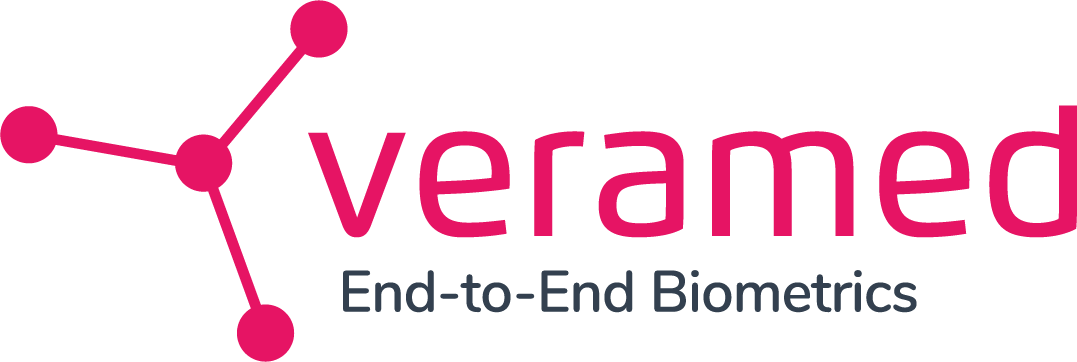
RECENT FACET SUCCESSES – JUST A FEW HIGHLIGHTS
FACET HELPS GOVERNMENT INVESTIGATE DEA DRUG OF CONCERN:
Facet champions IND preparation and submission to study PK and safety of widely available supplement. A large ex-US CRO and government agency jointly asked Facet to provide US regulatory affairs representation and support to investigate a DEA Drug of Concern under a US research IND. Facet conducted an extensive literature review and summarization of the information available on the drug, which served as the primary basis of evidence to support the IND. Facet also provided guidance and recommendations regarding the design of the IND-enabling clinical trial, including endpoint selection, safety evaluations, and schedule of assessments. The safe to proceed letter was issued 27 days after submission of the IND. Results from this study will provide the first controlled and systematic evaluation of the pharmacokinetics and safety of this supplement in humans.
COMMERCIAL IND FOR COMPLEX NCE CONTAINING CONTROLLED SUBSTANCE:
Facet prepares and submits IND to support participation in oncology basket trial. A 2-person ex-US company is developing a novel product containing 1 FDA-approved API and 1 controlled substance for the treatment of an oncology indication. After a successful pre-IND meeting, the company sought Facet’s help to prepare the contents of a commercial IND that would enable them to participate in a basket trial for an oncology indication. Over the course of several months, Facet summarized all the information collected to date on each API in the product, prepared the contents of the IND, and worked with the company to mitigate risks where gaps existed. Facet also worked with the CDMO that is preparing the drug product for clinical use. The IND was successfully submitted, and the company was allowed to dose patients with the NCE under the basket trial.
STREAMLINED STRATEGY FOR NEW INDICATION FOR RECENTLY APPROVED PRODUCT:
Facet uses strategic biometric support via partnership to set development strategy. A growing pharmaceutical company sought Facet’s help to design an aggressive pathway to a supplemental NDA for a new indication for their recently approved blockbuster product. Although the company had compelling preliminary efficacy data in a subset of patients under the new indication, there was a lack of information on how the product would perform in hard-to-treat patients. Facet helped this company secure the right statistical support to run simulations to confidently design a single pivotal trial with a formal interim analysis to improve the probability of success. Facet also prepared a meeting request and background package to seek FDA agreement on the sNDA strategy and clinical trial design. The FDA meeting was granted and is pending.

Partner News
Facet is delighted to announce a partnership with Veramed. Veramed is a pioneering CRO redefining intelligent healthcare decision-making. As trusted industry specialists, Veramed’s global team provides next-level biometrics support to move the needle when it comes to delivering high quality, on-time deliverables across the drug development life cycle. Their skilled statisticians and programmers employ knowledge of statistical design, data visualization, automation, and workflow methodologies to facilitate everything from small-scale trials and global submissions through to launch and beyond. Like Facet, Veramed tailors transparent and collaborative solutions to suit client needs, while staying true to a supportive culture that promotes a healthy work-life balance and employee happiness.


Spotlight On Rare Disease Development
RDEA Pilot Program to support the development of novel efficacy endpoints for drugs that treat rare diseases is now accepting proposals!
The goals of the RDEA program are to: 1) advance rare disease drug development through collaboration with FDA throughout the efficacy endpoint development process, 2) promote innovation and evolving science by sharing learnings on novel endpoint development through FDA presentations, guidance documents, public workshops, and a public-facing website, and 3) develop FDA staff capacity to facilitate development and use of novel endpoints.
If you have a novel efficacy endpoint that you would like to have considered under this program, you may submit an RDEA proposal from July 1, 2023, through September 30, 2023. FDA will accept 1 RDEA proposal and 1 alternate in FY2023. If accepted into the program, you would be eligible for an initial meeting and, if requested, up to three follow-up meetings with FDA to facilitate endpoint development. If you are not ready to make a proposal submission this year, don’t fret! FDA will accept 1 RDEA proposal per quarter up to a maximum of 3 RDEA proposals per year in FY2024 through FY2027.
Note: FDA intends to give preference to proposals that have the potential to have a broad impact (multiple products/diseases) and reflect a range of different types of endpoints.

DID YOU KNOW?
- Facet is on a mission to help small organizations bring great science and innovative products to and through FDA.
- Many small organizations waste significant money and time running large nonclinical programs to support their products. Facet can help you design a streamlined nonclinical plan that will get you into the clinic quickly and affordably.
- Facet prepares and submits over 12 orphan designation requests (ODRs) to FDA each year.

FDA ROUNDUP:
FDA Issues New User Fees for 2023-2024 – Costs Are Going Up! If you are submitting an NDA or BLA application that includes clinical data in 2023 or 2024, you will pay $3.24M, and a whopping $4.04M, respectively! Program fees are also up: $393,933 in 2023 and $416,734 in 2024.
Organizations submitting DMFs can also expect to pay more in 2023 and 2024: $78,293 and $94,682 for the application fee.
ANDA user fees have also increased: $240,582 in 2023 and $252,453 in 2024.
You may be eligible for a user fee and/or program fee waiver under certain circumstances. Talk to Facet to find out more!
FDA MIDAC Meeting Discussing Waiving Nonclinical Dosimetry Studies for Novel PET Products With Certain Radionuclides On August 1, 2023, FDA’s Medical Imaging Drugs Advisory Committee met to discuss the requirement for Sponsors to conduct animal dosimetry studies prior to IND submission for a first-in-human (FIH) clinical study for new 18F, 11C, 68Ga, 64Cu, 82Rb, and 13N PET drugs. FDA regulation [21 CFR 312.23(a)(10)(ii)] requires that sufficient data from animal studies is needed to allow reasonable estimation of the absorbed whole body and critical organ doses of drugs in humans. However, FDA approvals of a multitude of PET radiopharmaceuticals have yielded considerable information about the human radiation whole body and critical organ exposures for these radionuclides. In the MIDAC meeting, FDA presented results from a systematic review of animal and human dosimetry data as well as safety data from currently approved PET products. They concluded that if the proposed administered activity for a FIH study with a new PET drug radiolabeled with 18F, 11C, 68Ga, 64Cu, 82Rb, and 13N is less than or equal to 299 MBq (8 mCi), 555 MBq (15 mCi), 158 MBq (4.3 mCi), 148 MBq (4 mCi), 1440 MBq (39 mCi), and 552 MBq (15 mCi), respectively, adequate information exists which justifies omission of preclinical dosimetry studies. In general, the panel agreed, although there was some concern about 64Cu due to a longer half-life and less data compared to the other radionuclides. FDA and the advisory committee agreed that clinical dosimetry studies should occur as soon as possible in Phase 1 and be conducted with 6-20 patients.
FDA Rolls Out Revision to Draft Guidance on Formal Meetings In September, FDA issued Revision 1 to their draft guidance, Formal Meetings Between the FDA and Sponsors or Applicants of PDUFA Products. The updated guidance provides timelines for all interactions with FDA and outlines 2 new meeting types: Type D and INTERACT (INitial Targeted Engagement for Regulatory Advice on CDER and CBER producTs). Type D meetings are intended to be meetings that focus on a limited number (not more than 2) of issues (e.g., follow up questions after a formal meeting, general questions around an innovative development approach). INTERACT meetings, which replace the “pre pre-IND” meeting, are designed for novel products and novel situations which raise challenging or complex development situations (e.g., advice on study designs for first-in-human trial in a novel disease state for which there is no precedent or guidance, selection of appropriate animal model(s) or toxicology study designs, novel CMC issues or testing not covered by existing regulation, guidance, or regulatory precedent). The guidance also discusses the difference between in person face-to-face meetings versus virtual (Zoom) face-to-face meeting formats. Finally, the guidance stipulates that within 20 calendar days of receiving written responses (in the case of a WRO meeting) or FDA’s official meeting minutes, Sponsors may submit a “Request for Clarification” as a follow-up to make sure FDA feedback is fully understood. FDA’s clarifying response can be expected within 20 calendar days of the Request. At Facet, we are delighted to see FDA formalize a time-bound process for such feedback because Sponsors often want to ask clarifying questions after receiving FDA’s written responses (in the case of a WRO meeting) or formal meeting minutes.
FDA Warning Letter Uptick Related To Failure to Submit IND, Follow Investigational Plan, Lack of IRB Oversight This year, there has been an uptick in the number of FDA 483 warning letters issued to investigators for failing to submit an IND to support the conduct of a clinical investigation of a drug. With a few exceptions, a clinical investigation in which a drug is administered to human subjects must be conducted under an IND as required in 21 CFR 312 and comply with all FDA regulations and guidances. Exceptions include certain clinical investigations of a marketed drug. FDA has an excellent guidance on this topic, Guidance for Clinical Investigators, Sponsors, and IRBs Investigational New Drug Applications (INDs) — Determining Whether Human Research Studies Can Be Conducted Without an IND, which was issued in September 2013. If you are not sure your research requires an IND, reach out to Facet for an expert opinion.
FDA Final Guidance on Breakthrough Devices Program On September 15, FDA issued the guidance: Breakthrough Devices Program. FDA’s Breakthrough Devices Program is intended to expedite development, assessment, and review of certain medical device and device-led combination products that diagnose, treat, or prevent life-threatening or irreversibly debilitating diseases or conditions. The Breakthrough Devices Program replaces the Expedited Access Pathway and the Priority Review Program, but all devices with Breakthrough Device status should receive priority review. The guidance includes information about the fundamentals of the program, how to submit a designation request, and helpful examples. What is particularly interesting is that FDA has expanded the Breakthrough Devices Program to include certain devices that benefit populations impacted by health and/or healthcare disparities and certain non-addictive medical products to treat pain or addiction. If you are developing a medical device that you think may qualify for the Breakthrough Device program, contact Facet today for help in securing this highly sought after regulatory asset for your medical device.

FACET BY THE NUMBERS
Total submissions to FDA July – Sept 2023: over 40 (over 3 submissions a week!)
Early-stage development highlights: prepared/submitted 2 INDs for new chemical entities and over 30 IND amendments (e.g., new protocols/amendments, CMC updates, nonclinical study reports, annual reports, safety reporting/DSURs); prepared and submitted 2 pre-IND meeting requests/background packages and 1 Type C meeting request/background package; prepared and submitted 2 orphan designation requests; prepared and submitted 1 Breakthrough Therapy Designation (BTD) request; prepared several gap analyses and regulatory development plans; ongoing review of public-facing information (e.g., websites, flyers, conference presentations) for investigational products.
Late-stage development highlights: preparation of Phase 2 and 3 clinical regulatory strategies; 1 late-stage gap analysis; received 2 IND safe to proceed determinations; reached agreement with FDA on 1 IPSP; supported 1 organization to secure external funding; supported 1 organization to divest product; reviewed and submitted 1 program fee waiver request; maintained CT.gov postings; and ongoing ad promo strategy and document review.

gET sOCIAL